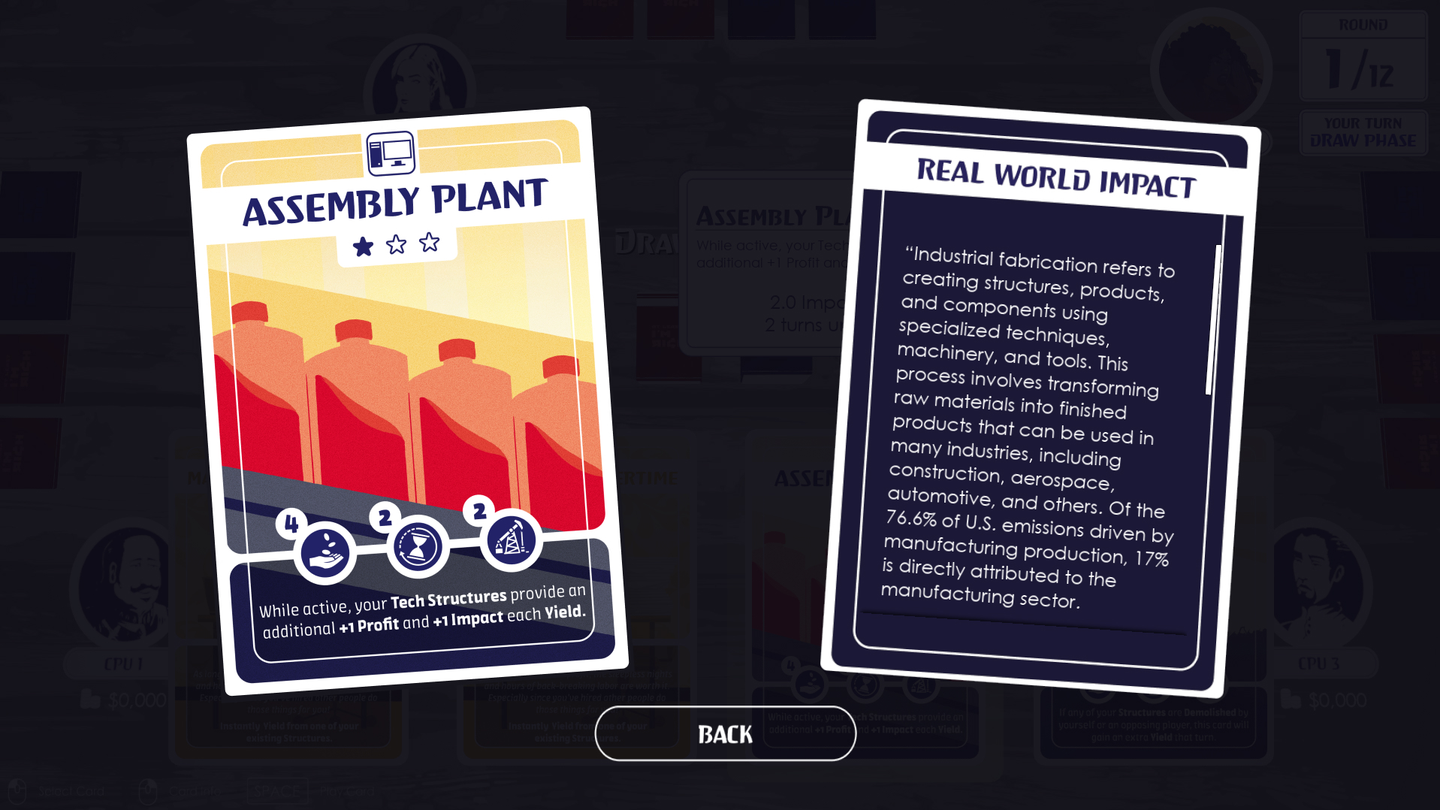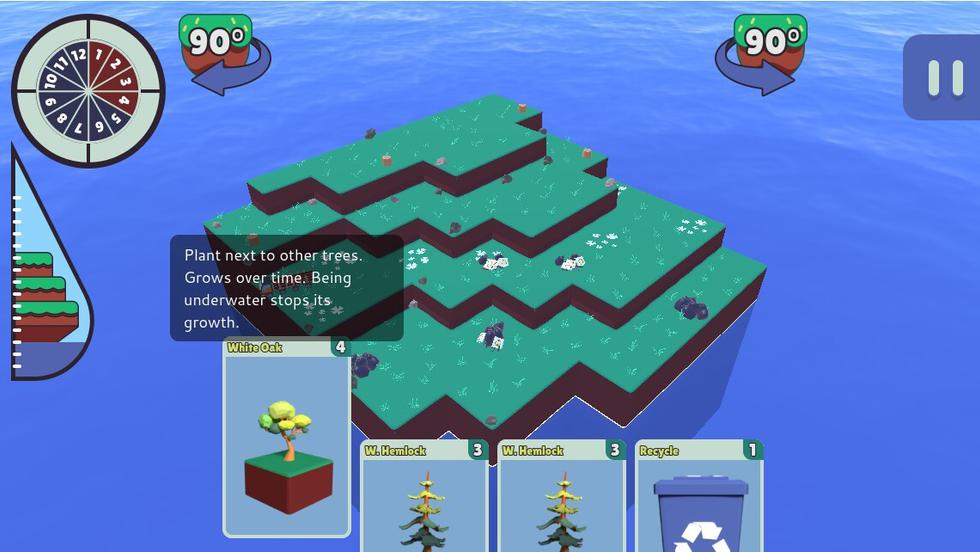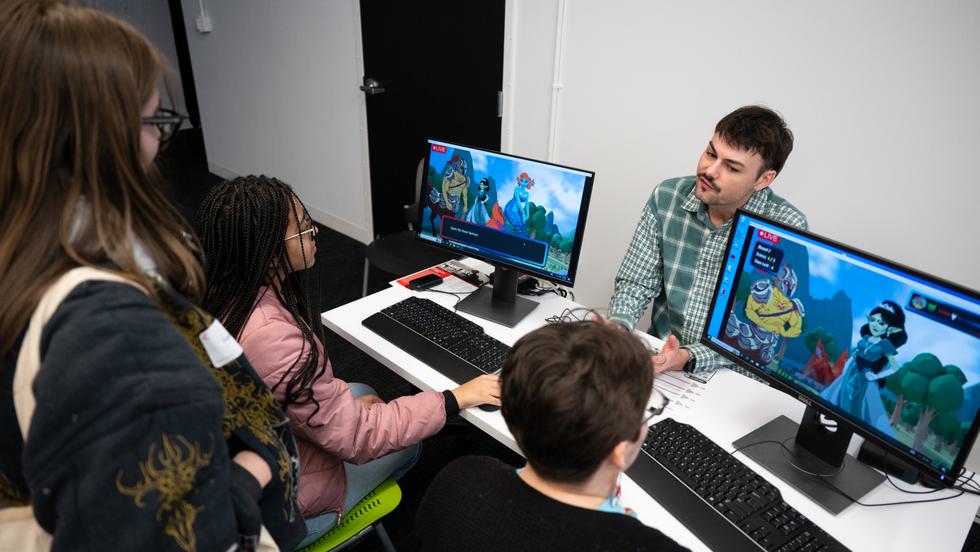
What could you do in only four weeks’ time? If you’re a Columbus College of Art & Design student, you might just use that time to create—from scratch—an internationally award-winning game with a powerful social message.
CCAD Game Art & Design students take home wins in Climate Game Jam
The 2024 Climate Game Jam, held June 15–July 20, was a joint effort among IndieCade, Games For Our Future, and EarthLab at University of Washington. It included nearly 50 projects from hundreds of creators—including five CCAD Game Art & Design students—hailing from more than 20 countries. It was, say organizers, “our biggest and most international Climate Jam yet.” And among this impressive field were two CCAD seniors whose teams went on to win top honors for their work: Hannah Robbins (Game Art & Design, 2025) and Reilly Sammet (Game Art & Design, 2024).
Climate Game Jam participants were tasked with creating a playable game (digital or physical) around the theme “Change the Story”—meaning they should tell stories of climate justice that aren’t often told, that they should counter the history of disinformation around climate change, and that they should address the complexity of the issue as one beyond pure pessimism or optimism. And they had only four weeks to do so. Submissions were then ranked by the participants, as well as a group of external judges, for their engagement of themes, “releasability,” aesthetic and technical merits, and other criteria.
“Having your game chosen by the community is a major deal. You now have a game in your portfolio that has international accolades from a reputable organization, you made connections along the way with students across the world who may be those next collaborators on a project or colleagues, your game is intended to be published on an official platform and website like Steam (one of the biggest virtual storefronts for games), and you and your team demonstrated one of the most difficult aspects of the game development process, moving from idea to vertical slice in such a short period of time,” says Game Art & Design Associate Professor and Chair Elizabeth Keegan.
At Least I’m Rich scores as Top Overall Game Choice at Climate Game Jam
Digital card game At Least I’m Rich, whose creators include Hannah Robbins (Game Art & Design, 2025), was named Top Overall Game Choice at the 2024 Climate Game Jam.
Robbins’ team created At Least I’m Rich, a 2D deck-building game. “Our game focuses on how corporate greed and large corporations influence the environment. We are hoping that this game changes the way that many people view humanity’s impact on the Earth,” she says. Players take on randomized roles and are tasked with building structures and taking on AI opponents in an effort to become as rich as possible without destroying the planet.
As art lead, Robbins worked 25–35 hours a week on the project, which called on her to maintain the chosen aesthetic for the games assets and create card illustrations. Thanks to her CCAD classes, Robbins knew the best sizes and export settings for her card game design—“a big helping factor,” she says.
Restoring Harmony sits pretty with win for Top Gameplay and Aesthetics at Climate Game Jam
Restoring Harmony, which won for Top Gameplay and Aesthetics at the 2024 Climate Game Jam, was created by an international team that included Reilly Sammet (Game Art & Design, 2024).
Sammet was art director for Restoring Harmony, a digital card game that tasked players with reversing the harms of deforestation and restoring harmony to the environment. Players also witness how an individual can be a catalyst for real and permanent change.
Between team activities, internship-specific tasks, game development, and documentation, Sammet estimates they spent about 140 hours working on Restoring Harmony. “I used a number of documentation tools introduced to me from classes, such as gantt charts and Miro, and workflow practices introduced to me in capstone and pipeline classes,” and their experience with such software as Maya, Unity, and Substance Painter in class transferred to their use of Blender and Gadot in their work on Restoring Harmony, says Sammet.

Climate Game Jam, classroom learning prepare students for career success
By taking part in activities such as the Climate Game Jam, students put their classroom learning to work, sharpening their technical skills and growing as teammates and collaborators—and through that, preparing them for employment in the game industry. More specifically, Keegan says, game jam participants are challenged within deadlines and under a variety of constraints, including skill sets, design goals, budget, playerbase, and so on; they create in partnership with a range of contributors, including musicians, artists, and software developers; and they are challenged to address unique design prompts or to demonstrate creative adaptation given unique guidelines. That final item, says Keegan, “is a double benefit, as it shows students the vast application of game design, shifting preconceived ideas and expanding possibilities for where games can support alternative initiatives beyond entertainment.”

Robbins, who is pursuing a career as a game art director or narrative developer, says she enjoyed partnering with her At Least I’m Rich teammates. She says she’d recommend the Climate Game Jam experience to other students considering it.
The time crunch and amount of cohesion that was necessary for this jam was a good look into what a professional career in game might look like,” says Hannah Robbins (Game Art & Design, 2025).
Sammet says the jam provided “a realistic window into the indie game industry.” It required participants to focus on the work, advocate for themselves, reach out to peers and mentors, and get involved in conversations,” they say.
“I picked up a number of skills through this experience. I grew my understanding of game development in an independent and remote setting, strengthened my ability to learn new software skills to fill gaps in team knowledge, and I reinforced my remote work practices,” says Reilly Sammet (Game Art & Design, 2024). “I also spent a lot of time learning what it really takes to get a game developed from start to finish and learned how to manage a team of other creatives in a way that facilitates their own individual creativity while adhering to a specific aesthetic.”
Restoring Harmony was selected to be one of the games in a Steam package for charity being developed by Indiecade, says Sammet. And as for Sammet, who graduates in December, they would like to ultimately get into game design for use in therapy and medical applications. “I think games and simulations are a phenomenal way to help people whether it be to facilitate healing through psychotherapy, physical retraining through physical or occupational therapy, or serve as training for medical professionals and patients,” they say.
Learn more about CCAD’s Game Art & Design program or apply here.
